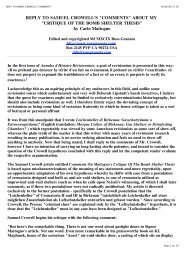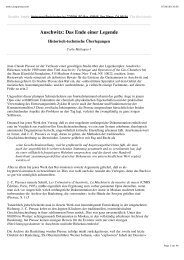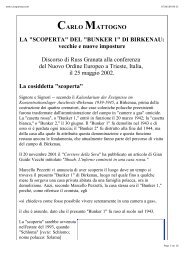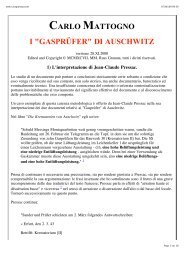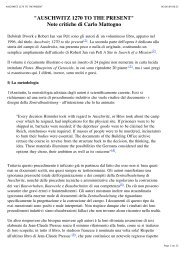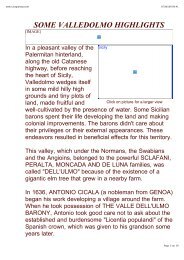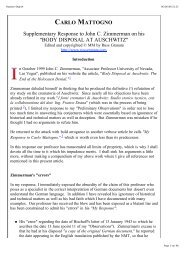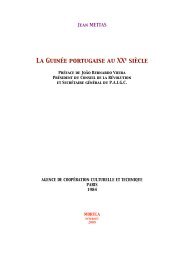CARLO MATTOGNO ON AUSCHWITZ CREMATIONS - morula
CARLO MATTOGNO ON AUSCHWITZ CREMATIONS - morula
CARLO MATTOGNO ON AUSCHWITZ CREMATIONS - morula
You also want an ePaper? Increase the reach of your titles
YUMPU automatically turns print PDFs into web optimized ePapers that Google loves.
<strong>CARLO</strong> <strong>MATTOGNO</strong> <strong>ON</strong> <strong>AUSCHWITZ</strong> CREMATI<strong>ON</strong>S<br />
06/06/09 08:40<br />
contemporary crematory ovens.<br />
Point 16 Scientific cremation experiments which were carried out<br />
in Germany (and in Switzerland) during the late 1920s, are utilized<br />
as a firm experimental basis for confronting and resolving essential<br />
questions of cremation duration and fuel consumption of a<br />
gasogene-fired, coke-fueled cremation oven, which are examined in<br />
detail in two specific chapters.<br />
Point 17 To present the public with as complete a picture as<br />
possible of Auschwitz cremation, Mattogno has not neglected the<br />
legal and statistical aspects with specific reference to Germany.<br />
These topics are presented in Part One of Volume I.<br />
Point 18 In Part Two, Mattogno has outlined the activities of the<br />
Topf company in the planning and constructing of civilian<br />
crematory ovens (which were among the Topf company's various<br />
other installations), describing in detail the structure and operation<br />
of the Topf crematory ovens which were fueled by coke, gas, and<br />
electricity. In this section is also found reports on the numerous<br />
patents (and applications for patents) which were granted, noticed,<br />
or submitted between the 1920s and the 1950s.<br />
Point 19 After his general introduction concerning the production<br />
of Topf company crematory installations for civilian use, Mattogno<br />
then presents information regarding the crematory facilities which<br />
were planned and constructed for the German World War Two<br />
concentration camps. He begins with the facilities at Dachau and<br />
Gusen (they had two-muffled crematory oven cremation chambers<br />
heated by naphtha, which were later converted to coke-fueled<br />
facilities).<br />
Point 20 With this, Mattogno gets into a main theme of this work,<br />
which begins with a documented history of the construction of the<br />
Auschwitz-Birkenau cremation ovens. This is followed by an<br />
accurate presentation of the structure and the operation of these<br />
Page 6 sur 33



